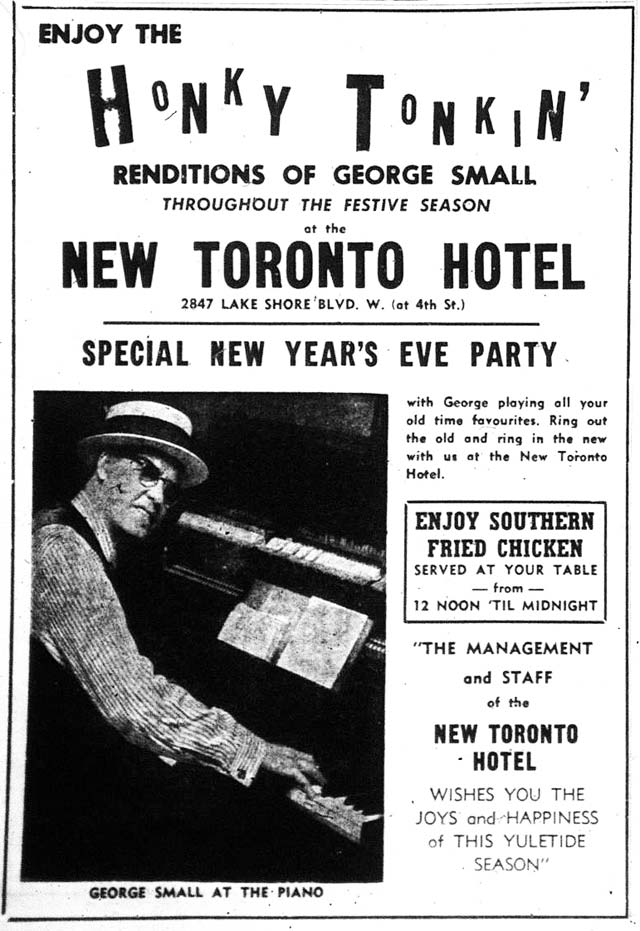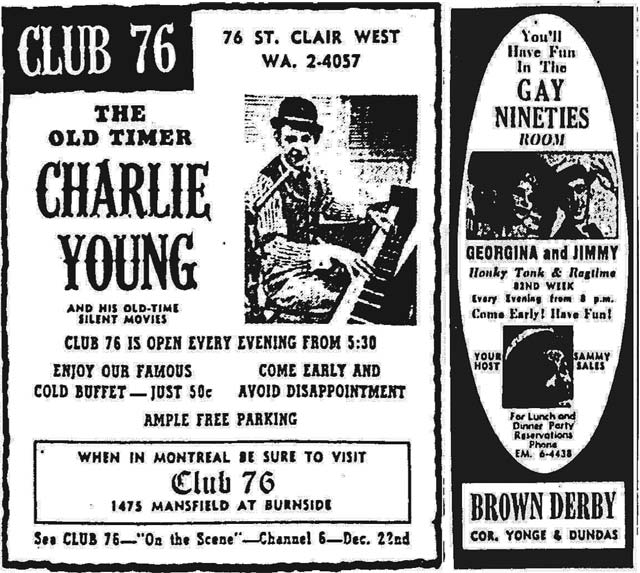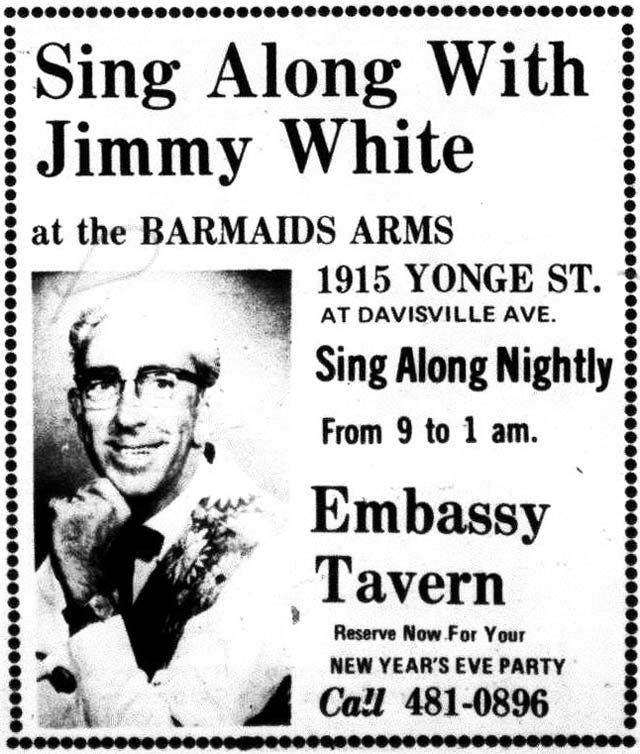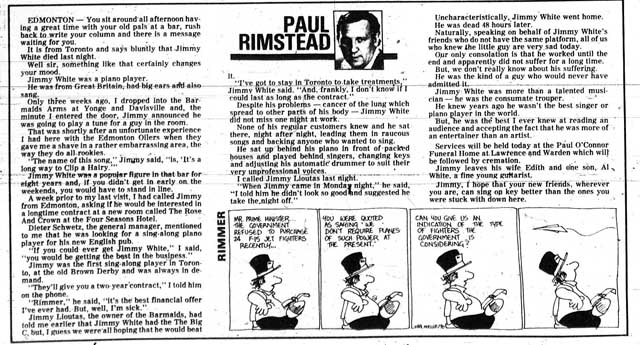Originally published on Torontoist on December 31, 2014.

Weston Times-Advertiser, December 22, 1964.
For many, music is a vital component of their New Year’s Eve celebrations. Hitting the dance floor, listening to a live act, or gathering around a piano to sing old favourites help glide the transition into another year.
In the 1960s, finding the nearest honky-tonk piano player or turn-of-the-century-inspired performer helped some Torontonians mark the calendar change. Across North America, genres like ragtime and barrelhouse piano music experienced a revival, sending bars like the New Toronto Hotel in search of the nearest musicians with striped shirts and 1890s-styled gowns. It was kitschy, but it allowed audiences to get into the spirit of things by encouraging them to drop their reserve and merrily sing along.
Pianist Charlie Young chalked up the revival to fatigue with a scary new musical style. “People just grew sick of rock ‘n’ roll,” he told the Star in 1962. “Rock had nothing for the older ones, or indeed anyone from 35 up. They turned to ragtime.”

Globe and Mail, December 18, 1961.
Club 76, named after its location on 76 St. Clair Avenue West, claimed to have started the old-timey music trend in Toronto. Owner Bob Cook opened his establishment in August 1959 after listening to ragtime pianist Bob Darch perform while vacationing in the Bahamas. Cook booked Darch as his first headliner, who was soon followed by Young, whose act relied on a century-old piano he found filled with sand in a Colorado hotel. To enhance the nostalgic atmosphere, silent movies were run simultaneously.
Musicians who latched onto forms of old-time piano scrambled to find ways to stand out as bars and lounges joined the bandwagon. “Honky-tonk piany hasn’t even scratched the surface in Toronto,” observed Maxe Sherman during a tenancy at the Concord Tavern’s Gaslite Room in 1961. “But you still have to have a gimmick.” For Sherman, that involved becoming a one-man band whose act included foot-operated maracas and tap-dancing on his piano stool.
One of the most popular venues was the Gay Nineties Room at the Brown Derby Tavern (now the site of 10 Dundas East). For seven years, singer Georgina Rogers and pianist Jimmy White led nightly honky-tonk and ragtime singalongs. The pair played in a Latin-themed band in a local hotel before launching their tenancy at the Brown Derby in 1960. Regular patrons were occasionally given the chance to warble a verse or two on their own. Among those joining in was opera star Teresa Stratas; the first time Rogers noticed Stratas, she went over to her table. “Say, you’ve got a nice voice,” Rogers joked. “You should take this up.”

Toronto Sun, December 28, 1972.
Around 1967, Rogers and White moved north to the Trophy Lounge at the Beverly Hills Motor Hotel on Wilson Avenue. Globe and Mail critic Blaik Kirby felt the move was a mistake: the space lacked the atmosphere and intimacy they enjoyed downtown, and the suburban audience wasn’t keen on singing along. By the early 1970s, White played a regular gig to a more appreciative crowd at the Barmaids Arms at Yonge and Davisville.
Back at the New Toronto Hotel, while George Small won’t be on hand to play all your old-time favourites this New Year’s Eve, the joint may still be jumping via its current incarnation: the Jay Jay’s Inn swingers club.
Additional material from the March 9, 1967 edition of the Globe and Mail, and the August 29, 1960, July 19, 1961, May 4, 1962, and March 28, 1964 editions of the Toronto Star.
UPDATE
As of the end of 2018, the New Toronto Hotel operates as The Westlake.
ADDITIONAL MATERIAL

Toronto Sun, March 30, 1979.
When Jimmy White died in 1979, Sun columnist Paul Rimstead wrote about one of his last performances.